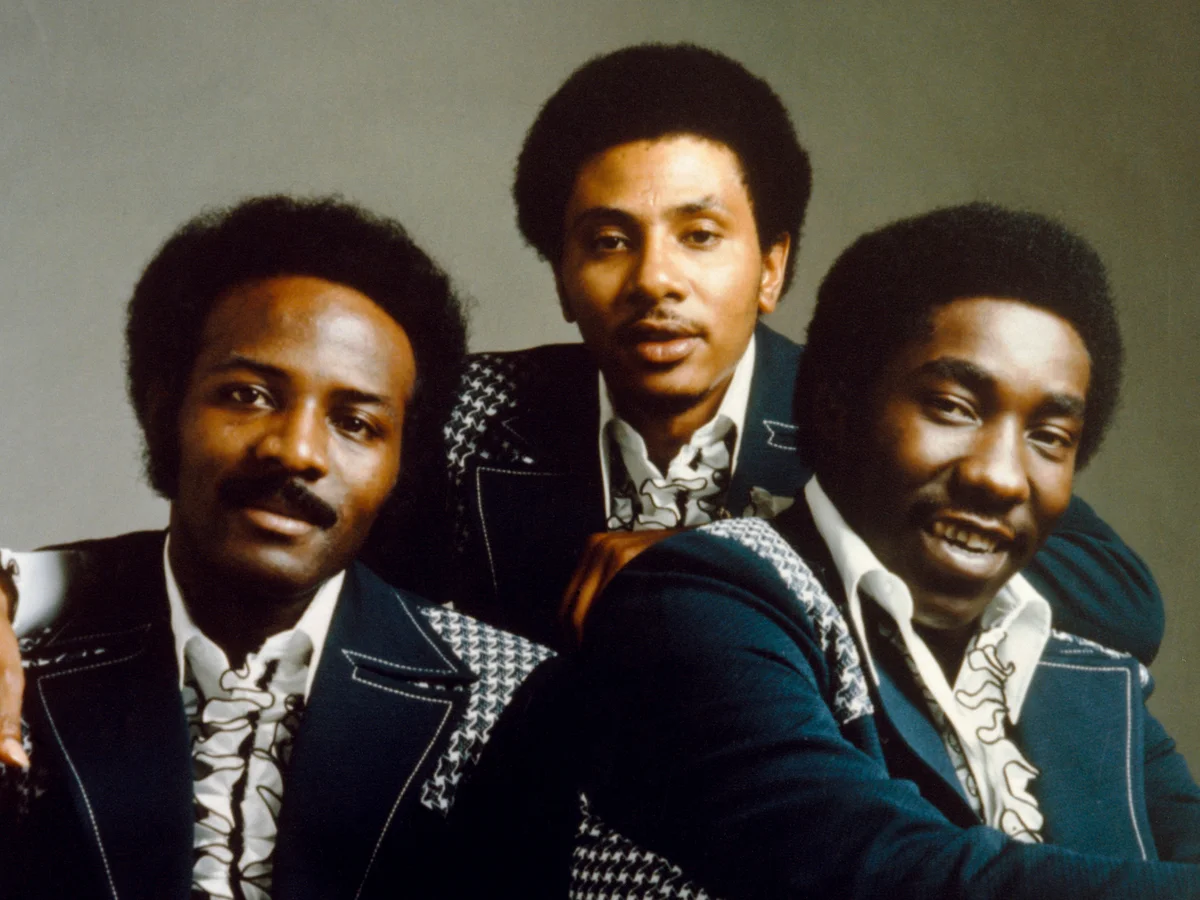The O’Jays are an American R&B group from Canton, Ohio, who became one of the most successful and influential soul groups of the 1970s. Known for their lush harmonies, smooth delivery, and socially conscious lyrics, the O’Jays helped define the Philadelphia soul sound, a blend of R&B, funk, and pop that dominated charts in the 1970s. With iconic hits such as “Love Train,” “Back Stabbers,” and “For the Love of Money,” the O’Jays achieved lasting success and left an indelible mark on soul, R&B, and popular music.
Early Formation and Career Beginnings
The O’Jays were formed in 1958 by childhood friends Eddie Levert, Walter Williams, William Powell, Bobby Massey, and Bill Isles. Originally called The Triumphs, they changed their name to The Mascots and eventually to The O’Jays in 1963 as a tribute to their manager and Cleveland DJ Eddie O’Jay.
In their early years, the O’Jays recorded a series of singles in the 1960s, enjoying moderate success but not achieving major commercial breakthroughs. They initially recorded on various labels, including Imperial and Bell, scoring regional hits but failing to gain national attention. The group’s fortunes changed in 1972 when they signed with Philadelphia International Records, a label founded by legendary producers and songwriters Kenneth Gamble and Leon Huff. This collaboration would define the group’s sound and success for the next decade.
Breakthrough and Success in the 1970s
The O’Jays’ breakthrough came with the release of their 1972 album “Back Stabbers,” which is considered a masterpiece of the Philadelphia soul sound. Produced by Gamble and Huff, the album featured a sophisticated blend of lush string arrangements, funky basslines, and socially conscious lyrics. The title track, “Back Stabbers,” became a major hit, peaking at number three on the Billboard Hot 100 and number one on the R&B charts. The song’s message of betrayal and deceit struck a chord with audiences and introduced the O’Jays to a wider audience.
The success of “Back Stabbers” was followed by one of their most iconic songs, “Love Train” (1973), which became an international anthem of unity and togetherness. With its infectious groove and uplifting lyrics, “Love Train” reached number one on the Billboard Hot 100, marking the group’s biggest hit and solidifying their place in pop and R&B history.
Other major hits during this period include:
- “For the Love of Money” (1974): A song with a powerful message about the corrupting influence of wealth, “For the Love of Money” became one of the O’Jays’ most recognized tracks. Its unforgettable bassline and socially relevant lyrics helped it become an enduring anthem, frequently used in pop culture, including as the theme for Donald Trump’s TV show The Apprentice.
- “Use Ta Be My Girl” (1978): Another chart-topping hit that exemplified the group’s ability to combine smooth harmonies with infectious, danceable rhythms.
Musical Style and Innovations
The O’Jays’ music is synonymous with the Philadelphia soul sound, which is characterized by smooth, orchestrated arrangements, driving rhythms, and socially aware lyrics. Under the production of Gamble and Huff, the O’Jays developed a sophisticated sound that blended elements of R&B, funk, and gospel, with lush strings and powerful horn sections enhancing their emotive vocal performances.
The group’s tight harmonies, led by Eddie Levert’s soulful lead vocals, Walter Williams’ smooth baritone, and William Powell’s tenor, created a distinctive vocal blend that became a signature of their music. The O’Jays’ songs often explored themes of love, betrayal, unity, and social justice, making their music both personally resonant and politically charged.
Their ability to address socially conscious topics without sacrificing commercial appeal was key to their success. Songs like “For the Love of Money” and “Back Stabbers” addressed issues of greed, betrayal, and societal problems, while songs like “Love Train” promoted messages of peace and togetherness. This balance of emotional depth and catchy melodies made the O’Jays stand out in the crowded R&B landscape of the 1970s.
Impact on Music and Legacy
The O’Jays were instrumental in popularizing the Philadelphia soul sound, which became one of the dominant styles in R&B during the 1970s and influenced artists across multiple genres. Their collaborations with Gamble and Huff helped to define the production style that would influence artists like Teddy Pendergrass, Harold Melvin & the Blue Notes, and later The Jacksons. The O’Jays’ influence can also be heard in the work of contemporary R&B and neo-soul artists like John Legend and Alicia Keys.
The group’s socially conscious lyrics and ability to address political and social issues set them apart from many of their contemporaries. Their songs, especially “For the Love of Money” and “Back Stabbers,” continue to be relevant and are often referenced in discussions of materialism, inequality, and the challenges of modern society. Their sound helped to shape the future of R&B, paving the way for the socially conscious messages of later artists like Marvin Gaye and Curtis Mayfield.
Later Years and Recognition
Although their popularity peaked in the 1970s, the O’Jays continued to record and perform well into the 21st century. They maintained a loyal fan base and remained active on the touring circuit, delivering energetic live performances that showcased their timeless hits.
In recognition of their contributions to music, the O’Jays were inducted into the Rock and Roll Hall of Fame in 2005. They have also received numerous accolades, including a BET Lifetime Achievement Award and induction into the Vocal Group Hall of Fame. Their music has been widely sampled and covered by artists in various genres, further solidifying their legacy as pioneers of soul music.
Legacy and Influence
The O’Jays’ influence on modern R&B and soul music cannot be overstated. Their vocal harmonies, socially conscious messages, and smooth production have influenced generations of musicians. Their ability to merge personal and political themes in their music has resonated with artists from The Temptations and Earth, Wind & Fire to contemporary acts like Boyz II Men and The Weeknd.
Their hits continue to be used in popular culture, commercials, films, and television shows, ensuring that their music remains relevant to new generations of listeners. The O’Jays’ place as one of the greatest R&B groups in history is secure, and their contribution to both the sound and message of soul music continues to resonate.
O’Jays YouTube Channel:
https://www.youtube.com/channel/UCbZoqpq2EXyMV4RJUyLBehA
References
- Warner, Jay. The Billboard Book of American Singing Groups: A History 1940-1990. Billboard Books, 1992.
- George, Nelson. Where Did Our Love Go: The Rise and Fall of the Motown Sound. Omnibus Press, 2003.
- “The O’Jays Biography.” AllMusic by Jason Ankeny. Available at: AllMusic.com
- “The O’Jays Inductee.” Rock and Roll Hall of Fame. Available at: Rockhall.com
- Dyson, Michael Eric. Mercy, Mercy Me: The Art, Loves, and Demons of Marvin Gaye. Hachette Books, 2004.


Leave a Reply